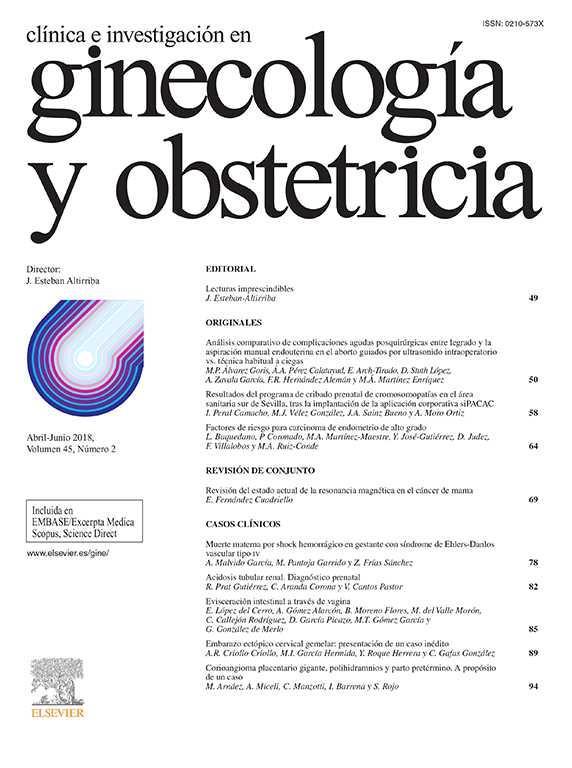To investigate the role of both cervical mucus and semen parameters in diagnostic tests of the cervical factor: Insler test, postcoital test (PCT) and in vitro sperm-cervical mucus penetration test (PT), with special interest in identified pathogenic organisms.
Material and methodsWe investigated infertility in 376 infertile patients, concentrating on the cervical factor in 281 of them (74.73%), and using three test methods. Insler (n = 201), postcoital (n = 254), and PT (n = 79), and endocervical and vaginal secretion cultures in all of them. Also the direct microimmuno-fluorescence test (Micro-Trak)®and 222 routine sperm tests on their partners.
ResultsInsler test was normal in 72.6% of the cases, without significant (NS) correlation with infection. The postcoital test was pathological in 72.55% of cases. We correlated these with the Insler test results (P< 0.005; χ21 = 105.670), TPV results (NS), semen parameters (P < 0.005; χ21 = 4.441) and infection (NS), particularly with Chlamydia trachomatis(χ21= 0.529; P< 0.005). The PT showed in 45.8% of cases the sperm did not penetrate, in 24.1% it did, in 3.6% mobility was lowered, and in 26.5% it was immobile, noting that PT was in correlation with sperm analysis (P < 0.005; χ21= 3.920).
Conclusion:The results of the postcoital test depend on the properties of the mucus and semen, these being altered by the presence of C. trachomatisinfection, so that PT is related to the sperm parameters.
Se ha evaluado la influencia tanto del moco cervical como de las características del semen en las diversas pruebas diagnósticas del factor cervical: test de Insler,test poscoital y test de penetración in vitro,con especial atención al papel que desempeñan los microorganismos patógenos identificados.
Material y métodos:Se efectuó el protocolo de esterilidad a un total de 376 mujeres,centrándonos en el análisis del factor cervical,llevado a cabo en 281 de ellas (74,73%), con tres pruebas:de Insler (n = 201), poscoital (n = 254) y de penetración in vitro (n = 79),además de cultivos de la secreción endocervical y vaginal a todas ellas, y test de microinmunofluorescencia directa para la identificación de Chlamy dia trachomatis (Micro-Trak®),así como 222 espermiogramas a sus parejas.
Resultados:El test de Insler fue normal en el 72,6% de los casos,no hallando relación con la infección (NS). El test poscoital se estableció como patoló gicoen el 72,5% de los casos. Se relacionaron sus resultados con el test de Insler (p < 0,005; χ21= 5,670), el test de penetración in vitro (NS),con los del espermiograma (p < 0,005; χ21= 4,441) y con la infección demanera global (NS) y por C. trachomatisen particular(χ21= 0,529; p < 0,005). En el test de penetración in vitro se observó que en un 45,8% de los casos los espermatozoides no penetraban,en un 24,1% sí lo hacían,en tanto que en un 3,6% se disminuía su movilidad y en un 26,5% se inmovilizaban,observando que el test de penetración in vitro se relacionaba con el espermiograma (p < 0,005:χ21 = 3,920).
Conclusión:Los resultados del test poscoital dependen de las características del moco y del semen, y se encuentran alterados ante la presencia de infección por C. trachomatis,en tanto que el test de penetración in vitro se relaciona con los valores del espermiograma.






